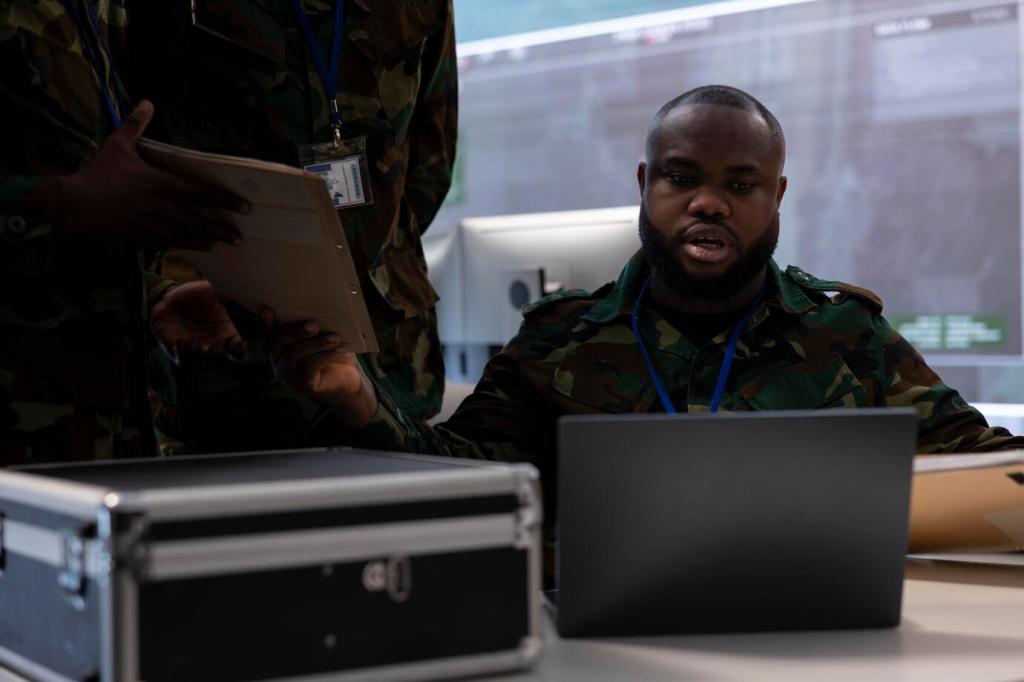
AI-Driven Threat Detection: Smarter Security for a Relentless World
Chosen theme: AI-Driven Threat Detection. Step into a practical, story-rich guide to building defenses that learn, adapt, and never sleep. Join our community—subscribe, comment with your toughest detection challenges, and help shape the next posts.
From Signatures to Signals: The Evolution of AI-Driven Threat Detection
Polymorphic malware, living-off-the-land techniques, and credential abuse change shape daily, slipping past brittle signatures. AI-driven detection watches sequences and context instead—who, where, when, and why—so small anomalies add up to a credible story. Comment if you’ve retired a rule that caused fatigue.
From Signatures to Signals: The Evolution of AI-Driven Threat Detection
Endpoints, identity, network, and cloud logs carry fragments of truth. AI models link them—an unusual login, odd process tree, and silent egress together reveal intent. What telemetry source surprised you with outsized value? Share your unsung hero in the thread.



Inside the Models: Learning to Spot the Unusual
When you have solid labels, supervised models shine. Balance classes to avoid ‘everything is benign,’ regularize to reduce overfitting, and retrain as tactics evolve. Incorporate analyst dispositions as fresh labels weekly. What labeling workflow keeps your data honest and momentum steady?
Inside the Models: Learning to Spot the Unusual
Autoencoders, isolation forests, and seasonal baselines flag deviations without prior signatures. The trick is context: compare peers, time windows, and past behavior to avoid false positives. Have peer groups or rolling baselines cut your noise? Describe your best tuning tip.
Data Pipelines That Don’t Break at 2 A.M.
Quality First: Normalization, Enrichment, and Drift Guards
Standardize fields, enforce schemas, and track null rates like SLOs. Enrich with threat intel, user roles, and asset criticality. Monitor feature drift so silent changes don’t corrode performance. What metrics do you alert on to prevent invisible degradation?


Feature Engineering: Turning Events Into Behavioral Clues
Think in sequences, graphs, and time. Build session windows, peer comparisons, and graph features linking identities, machines, and resources. Simple ratios—failed-to-successful login rates—often outperform exotic features. Which engineered signal became your unexpected workhorse?
Human–AI Collaboration in the SOC
Triage Co-Pilot: From Piles of Alerts to Prioritized Stories
Group related events, attach evidence, and rank by probable impact. Explanations—like top contributing features—build trust and accelerate action. What explanation style (scores, timelines, graphs) helps your analysts decide within minutes, not hours?
Automation With Guardrails: When to Let the Model Act
Automate low-risk actions—quarantine suspicious tokens, disable stale keys, isolate ephemeral workloads—while routing ambiguous cases to humans. Add rollback plans and rate limits. Tell us one containment you now safely automate thanks to better model precision.
Training, Drills, and Playbooks That Learn
Run purple-team exercises, update playbooks with postmortems, and let models absorb new patterns. Celebrate small wins to reinforce trust. What drill exposed the biggest gap, and how did AI help close it the next week?

Data Minimization and Sensitive Fields
Collect only what detection needs, mask PII where possible, and separate secrets from analytics. Use role-based access and short retention for raw logs. What’s your approach to balancing investigative depth with user privacy expectations?

Fairness: Don’t Confuse Unusual With Unsafe
Night-shift engineers and high-travel executives look anomalous by default. Calibrate to roles, seasons, and peer groups to avoid bias. Audit alerts for disparate impact. Have fairness reviews changed how you score risky behavior?

Explainability and Accountability
Record model versions, features, and reasons behind actions. Provide human-readable rationales and safe counterfactuals—‘if not for this token scope, risk would drop.’ What documentation practice made regulators, customers, and analysts simultaneously happier?
Start Today: Your AI-Driven Threat Detection Journey
Spin up a lab with containerized services, collect endpoint, identity, and network telemetry, and replay benign plus simulated attacker behavior. Map tests to well-known tactics to track coverage. What first experiment will you run this week?

